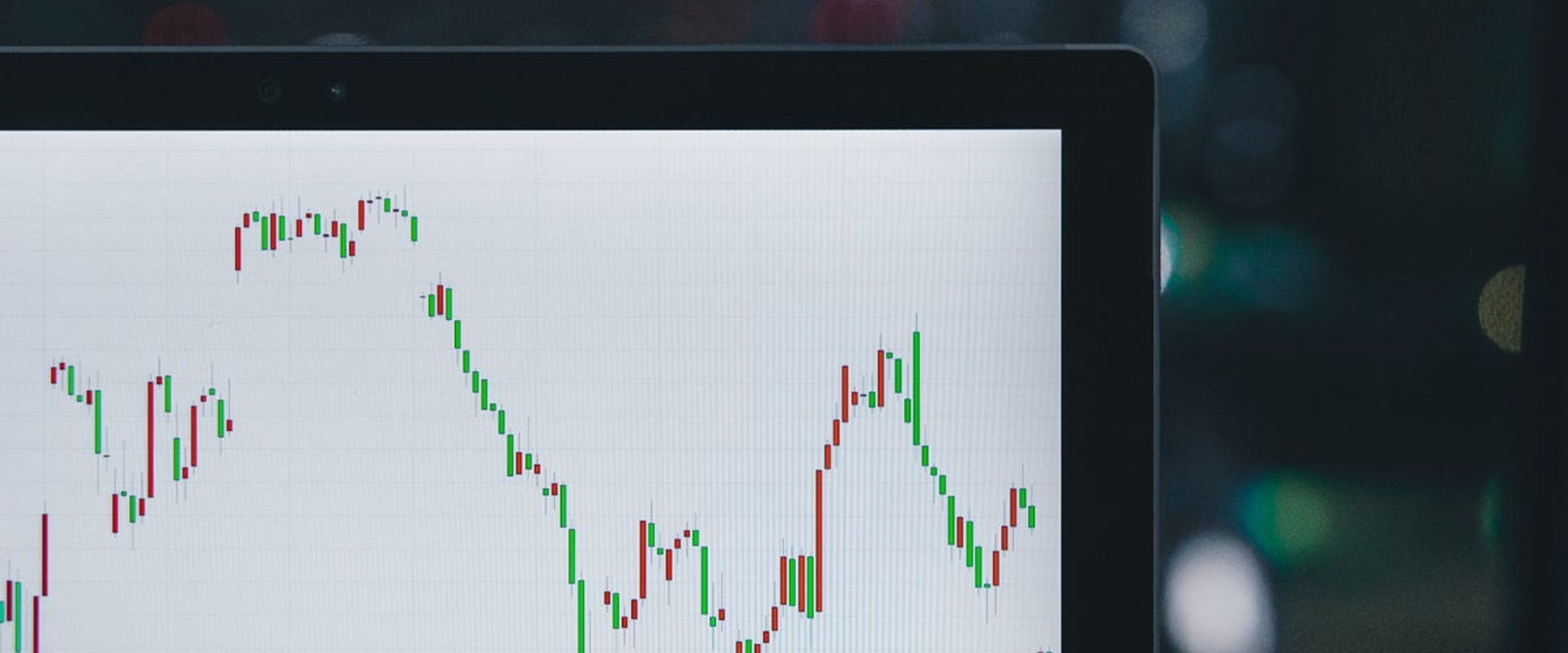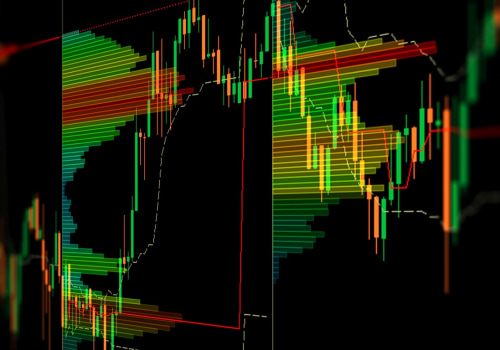In the dynamic and fast-paced world of forex trading, managing risk is of utmost importance. One of the essential risk management tools available to traders is the stop loss order. A stop loss order is a predetermined instruction to automatically exit a trade if it reaches a certain unfavorable price level. This article will delve into the concept of stop loss orders in forex trading, their significance, and how to effectively utilize them to protect your capital.
What are Stop Loss Orders?
A stop loss order, often abbreviated as SL, is a risk management tool used in forex trading to limit potential losses. It is an instruction given to a broker or trading platform to close a position automatically when the market price reaches a specified level. By utilizing stop loss orders, traders can protect their capital by minimizing losses in case the market moves against their position.
Importance of Stop Loss Orders
Stop loss orders play a crucial role in managing risk and protecting trading capital. Here are some key reasons why they are essential:
Preservation of Capital: Stop loss orders help prevent substantial losses by closing trades automatically at predetermined price levels, thus protecting the trader's capital.
Emotion Control: Emotions can cloud judgment during trading, leading to impulsive and irrational decisions. Stop loss orders provide a disciplined approach, removing emotional biases and ensuring that trades are closed based on predetermined criteria.
Risk Management: Successful trading involves effective risk management. By setting appropriate stop loss levels, traders can control the amount of risk they are willing to take on each trade.
Peace of Mind: Knowing that potential losses are limited can provide traders with peace of mind, allowing them to focus on their overall trading strategy without constant worry about adverse market movements.
Setting an Effective Stop Loss Order
Setting an effective stop loss order requires careful consideration and analysis. Here are some guidelines to follow:
Market Volatility: Consider the volatility of the currency pair being traded. More volatile pairs may require wider stop loss levels to accommodate market fluctuations.
Support and Resistance Levels: Identify key support and resistance levels on the price chart. Placing stop loss orders beyond these levels can help minimize the risk of premature trade closures.
Technical Analysis: Utilize technical indicators, chart patterns, and other tools to identify potential areas of price reversal or trend continuation. Adjust stop loss levels accordingly to align with the analysis.
Risk-Reward Ratio: Determine an appropriate risk-reward ratio for each trade. The stop loss level should be set in a way that aligns with the desired ratio and the trader's overall risk tolerance.
Types of Stop Loss Orders
There are two common types of stop loss orders: fixed stop loss orders and trailing stop loss orders.
a. Fixed Stop Loss Orders
A fixed stop loss order specifies a predetermined price level at which the trade will be closed. This type of order remains unchanged unless manually adjusted by the trader. It provides a static level of protection and is suitable for traders who prefer a more traditional approach to risk management.
b. Trailing Stop Loss Orders
A trailing stop loss order is a dynamic order that adjusts as the trade moves in the trader's favor. It trails the price at a fixed distance, maintaining a specified buffer. If the market price reverses by the specified buffer distance, the trade is automatically closed. Trailing stop loss orders allow traders to protect profits while allowing for potential further gains.
Considerations for Placing Stop Loss Orders
When placing stop loss orders, it is important to take the following factors into account:
Trade Timeframe: Different timeframes may require different stop loss levels. Shorter timeframes may necessitate tighter stop loss orders, while longer timeframes may require wider stop loss levels to accommodate market noise.
Market Conditions: Consider the current market conditions and events that may impact price movements. Economic announcements, geopolitical events, or unexpected news can result in increased market volatility, necessitating wider stop loss levels.
Account Size and Risk Tolerance: Adapt stop loss levels to align with the trader's account size and risk tolerance. Smaller accounts may require tighter stop loss orders to limit potential losses, while larger accounts may allow for wider stop loss levels.
Trade Management: Regularly review and adjust stop loss orders as the trade progresses. As the market price evolves, trailing stop loss orders can be adjusted to lock in profits or tighten the protection against potential losses.
Calculating Stop Loss Levels
The calculation of stop loss levels is influenced by various factors, including price volatility, trade timeframe, and risk tolerance. Traders employ different methods to determine the appropriate stop loss levels, such as:
Percentage-Based Stop Loss: Setting a stop loss level as a percentage of the entry price. For example, a trader may choose to set a stop loss at 2% below the entry price.
Support and Resistance Levels: Placing stop loss orders beyond key support or resistance levels to protect against false breakouts or unexpected reversals.
Volatility-Based Stop Loss: Utilizing measures of price volatility, such as average true range (ATR), to calculate stop loss levels. A wider stop loss may be used in highly volatile markets.
Stop Loss Strategies
Various stop loss strategies can be employed based on different trading styles and market conditions. Some commonly used strategies include:
Static Stop Loss: Placing fixed stop loss orders at predetermined levels based on technical analysis or key support and resistance levels.
Trailing Stop Loss: Utilizing trailing stop loss orders to lock in profits as the market moves in favor of the trade while still protecting against adverse price reversals.
Break-Even Stop Loss: Adjusting the stop loss level to the entry price once the trade has moved in a profitable direction, ensuring that the trade will not result in a loss even if the market reverses.
Avoiding Common Mistakes
When utilizing stop loss orders, it is important to avoid common mistakes that can negatively impact trading performance:
Setting Stop Loss Levels Too Close: Placing stop loss orders too close to the entry price may result in premature trade closures due to market noise or minor price fluctuations.
Neglecting to Adjust Stop Loss Orders: Failing to regularly review and adjust stop loss levels as the trade progresses can result in missed opportunities to lock in profits or protect against losses.
Relying Solely on Stop Loss Orders: Stop loss orders are a valuable risk management tool, but they should not be the sole method of managing risk. Incorporating other risk management techniques, such as position sizing and diversification, is essential for long-term success.
Benefits and Limitations of Stop Loss Orders
Stop loss orders offer several benefits to traders:
Risk Management: Stop loss orders help traders manage and limit their risk exposure by automatically closing trades when predetermined price levels are reached.
Emotional Discipline: By removing emotions from the decision-making process, stop loss orders provide a disciplined approach to trading, preventing impulsive and irrational decisions.
Flexibility: Different types of stop loss orders offer flexibility to adapt to different market conditions and trading strategies.
However, it is important to recognize the limitations of stop loss orders:
Market Gaps: During periods of high volatility or significant news events, market gaps may occur, causing the trade to be closed at a different price than the stop loss level.
Slippage: Slippage can occur when the execution of a stop loss order happens at a different price than intended, especially in fast-moving markets.
The Psychology behind Stop Loss Orders
Understanding the psychology behind stop loss orders is crucial for effective implementation. Traders may experience psychological challenges when it comes to stop loss orders, such as:
Fear of Loss: Traders may be reluctant to accept losses, leading to hesitation in setting appropriate stop loss levels.
Confirmation Bias: Traders may hold on to losing positions in the hope of a reversal, ignoring the signals provided by stop loss orders.
Regret Aversion: Traders may fear the regret of being stopped out and missing out on potential profits if the trade eventually turns in their favor.
By acknowledging and addressing these psychological factors, traders can make more objective decisions and effectively utilize stop loss orders.
Impact of Stop Loss Orders on Trading Performance
Stop loss orders have a direct impact on trading performance. When used correctly, they can:
Preserve Capital: Stop loss orders protect trading capital by limiting losses and preventing significant drawdowns.
Improve Risk-Adjusted Returns: By managing risk effectively, stop loss orders can enhance risk-adjusted returns, allowing for more consistent and sustainable trading results.
Reduce Emotional Stress: The presence of stop loss orders reduces the emotional stress associated with trading, providing traders with peace of mind and allowing them to focus on their overall trading strategy.
Using Stop Loss Orders with Other Risk Management Techniques
While stop loss orders are an important component of risk management, they are most effective when used in conjunction with other risk management techniques. Consider incorporating the following techniques into your trading strategy:
Position Sizing: Determine the appropriate position size based on the risk tolerance and account size to ensure that potential losses are within acceptable limits.
Diversification: Spread your risk across multiple currency pairs or other assets to minimize the impact of adverse price movements on your overall portfolio.
Risk-Reward Ratio: Assess the risk-reward ratio for each trade, ensuring that potential profits outweigh potential losses.
Risk-Reward Ratio and Stop Loss Orders
The risk-reward ratio is a critical concept when setting stop loss orders. It refers to the potential profit compared to the potential loss of a trade. By maintaining a positive risk-reward ratio, traders can achieve profitability even with a lower win rate. A risk-reward ratio of 1:2 means that for every dollar risked, the trader aims to make two dollars in profit.
The Importance of Regularly Reviewing Stop Loss Levels
As market conditions change, it is crucial to regularly review and adjust stop loss levels. By doing so, traders can adapt to evolving market dynamics, lock in profits, and protect against potential losses. It is recommended to review stop loss levels at predetermined intervals or when significant market events occur.
Additional Information
Forex trading is a high-risk but potentially lucrative investment. When done right, it can be a great way to make money. However, it can also be a risky endeavor, as the currency market is highly volatile and unpredictable. To protect yourself from losses, it's important to understand how to use stop loss orders when trading currencies.
Stop loss orders are a type of risk management tool that can help limit your losses and ensure that you don't take on more risk than you're comfortable with. In this article, we'll discuss the basics of stop loss orders and how they can be used to protect your investments in Forex trading. We'll also provide some tips on how to use these orders effectively in order to minimize your risk and maximize your potential profits. Stop loss orders are an important risk management tool for forex traders. They are designed to limit losses on a particular position if it moves against the trader. Stop loss orders can be used to automatically close a trade at a specified price or percentage, so that traders don't have to manually monitor the position.
To understand how stop loss orders work, it's important to understand the different types of orders available.
Trailing stops
are a type of stop loss order that adjusts dynamically as the price of the asset changes. A trailing stop is set as a percentage or dollar amount away from the current market price. As the price moves in the trader's favor, the trailing stop will move with it, protecting gains and limiting losses. For example, if a trader sets a 10% trailing stop for a position, and the price moves 10% in their favor, the trailing stop will move to the new price level and protect any further gains made.Contingent stops
are another type of stop loss order, which are triggered when an asset reaches a specified price level.Contingent stops can be used to place orders based on price levels that may be higher or lower than the current market price. This type of order is often used when traders expect prices to break through certain levels and want to take advantage of potential profits or limit losses if the break fails to happen. Stop loss orders can be used in many different trading scenarios. For example, if a trader has bought a currency pair and wants to limit their losses if it goes against them, they can place a stop loss order at a certain level. If the price falls to that level, the order will be triggered and the position will be closed automatically.
This can help traders stay in control of their positions and make sure that their losses are minimized. Stop loss orders also have some disadvantages. If the market makes a sudden large move, stop loss orders may be triggered even though the position was still profitable. This is known as slippage and can lead to unexpected losses. Stop loss orders also need to be carefully monitored as they can easily be set too close to the current market price, which may result in the position being closed prematurely. To manage risk with stop loss orders effectively, there are a few tips traders should keep in mind.
Firstly, they should set reasonable limit order sizes that are in line with their risk appetite. Secondly, they should consider using a trailing stop to protect gains and limit losses. Finally, they should always be aware of the market's volatility so they can adjust their stop loss orders accordingly.
Tips for Managing Risk with Stop Loss Orders
Stop loss orders can be an effective way of managing risk when trading in the forex markets. To make the most of stop loss orders, there are some important tips that traders should keep in mind.Set a Reasonable Limit Order Size: When setting a stop loss order, it is important to make sure the limit order size is reasonable and in line with the size of the position. Setting an overly tight limit order size can lead to premature liquidation of a position, while setting an overly large limit order size can lead to unnecessarily large losses.
Use a Trailing Stop:
A trailing stop is another useful tool for managing risk with stop loss orders. A trailing stop adjusts the stop loss order as the market moves, allowing traders to lock in profits as the market moves in their favor.Be Aware of Market Volatility: It is also important to be aware of the potential for market volatility when using stop loss orders. If the market is particularly volatile, it may trigger a stop loss order before the desired level is reached. Therefore, it is important to consider the level of market volatility when setting a stop loss order.
What is a Stop Loss Order?
A stop loss order is a type of order placed by traders to limit their losses in the Forex market. It is an order to buy or sell a currency pair when it reaches a certain price, either higher or lower than the current price.The order will be executed at the specified price or better, meaning that if the price drops below the specified level, the order will be filled at a lower price. Stop loss orders are an important risk management tool and can help traders protect themselves against large losses. When placing a stop loss order, traders should take into account their own risk tolerance and desired outcome. For instance, if a trader wants to limit their losses to a certain amount, they may place a stop loss order at a level that will close out their position if the market moves against them. By setting stop loss orders, traders can also ensure that they take profits when markets move in their favor. As soon as a trade moves in the right direction and reaches the desired level, the stop loss order can be triggered and the profit can be taken.
How to Use Stop Loss Orders
Stop loss orders are an important tool for managing risk when trading in the forex markets.A stop loss order is an order to sell a security when it reaches a certain price, and is used to limit losses on a position. When the price of the security reaches the stop loss order level, the order is executed and the position is closed at that price. Stop loss orders can be used in different trading scenarios, such as when entering a long or short position, or when trailing a position. Here are some examples of how to use stop loss orders in different trading scenarios:Entering a Long Position:When entering a long position, traders may set a stop loss order slightly below the entry price. This will ensure that if the market turns against them, their losses are limited to the difference between their entry price and the stop loss order price.
Entering a Short Position:
When entering a short position, traders may set a stop loss order slightly above the entry price.This will ensure that if the market turns against them, their losses are limited to the difference between their entry price and the stop loss order price.
Trailing a Position:
Traders may also use stop loss orders when trailing a position. When trailing a position, traders may set a stop loss order at an appropriate level above or below the current price. If the market moves against them, their losses will be limited to the difference between their current price and the stop loss order price.Advantages and Disadvantages of Stop Loss Orders
Stop loss orders are an important risk management tool for forex traders. They allow traders to automatically close a position when it reaches a certain level of loss, preventing further losses.But there are both advantages and disadvantages to using stop loss orders.
Advantages:
The main advantage of using stop loss orders is that they help limit losses in the event of a trade going wrong. By setting a stop loss order, traders don’t have to worry about manually closing their position if it moves against them. This can be especially useful in volatile markets where prices can move quickly.Stop loss orders can also be used as part of a trading strategy. Traders can set a stop loss order at a level that is below their entry price, and use the order to take profits automatically when the market reaches a certain level of gain.
Disadvantages:
There are also some potential drawbacks to using stop loss orders. One of the main disadvantages is that they are not foolproof.In particularly volatile markets, prices may move quickly, and an order may be triggered before it has had time to reach its desired level. Another potential issue is that stop loss orders may not always be executed at the exact price that you set. Market conditions can cause your order to be filled at a different price than what you intended. Finally, stop loss orders may not be suitable for all trading strategies.
Some strategies, such as scalping, require very tight stop losses, which may not be achievable with a stop loss order.
Types of Stop Loss Orders
Stop loss orders are an important tool for Forex traders, as they help to manage risk and protect against large losses. There are three main types of stop loss orders that can be used: the basic stop loss, the trailing stop loss, and the guaranteed stop loss.Basic Stop Loss
A basic stop loss order is a straightforward order to buy or sell a currency at a certain price. This order will be triggered when the currency reaches the specified price.The price of the stop loss order will usually be set below the current market price. For example, if a trader is long on the EUR/USD pair and wants to set a stop loss order, they would set it at a price below the current market price. This order would then be triggered if the pair falls to that price or lower.
Trailing Stop Loss
A trailing stop loss order is similar to a basic stop loss, but it moves with the market.As the market price moves in a favorable direction, the stop loss order will also move, allowing traders to lock in more profit. This type of order is useful for traders who want to stay in a trade for a longer period of time and take advantage of any potential profits that may occur.
Guaranteed Stop Loss
A guaranteed stop loss order is a more advanced type of stop loss order that provides extra protection for traders. With a guaranteed stop loss, even if the market gaps or spikes, the order will still be executed at the specified price.This type of order is particularly useful for traders who are trading during volatile times, as it can help protect them from large losses. Stop loss orders can be a useful tool for forex traders who are looking to manage risk. By setting predetermined limits, traders can limit their losses and stay in control of their positions. There are a variety of types of stop loss orders available, and it is important to understand how they work in order to use them effectively.
Advantages such as improved risk management and automated exit points are balanced by the potential for slippage and manipulation. Ultimately, traders should consider using stop loss orders as part of their risk management strategy, while taking the time to understand how these orders work so that they can use them to their advantage.
Conclusion
Stop loss orders are indispensable tools in forex trading for managing risk and protecting trading capital. By setting effective stop loss levels, traders can mitigate losses, maintain emotional discipline, and improve overall trading performance. However, it is important to understand the limitations of stop loss orders and incorporate them into a comprehensive risk management strategy. Remember to regularly review and adjust stop loss levels to adapt to changing market conditions. Happy trading!
1. What is a stop loss order in forex trading?
A stop loss order is a predetermined instruction to automatically close a trade when the market price reaches a specified level, helping traders limit potential losses.
2. How do stop loss orders help in managing risk?
Stop loss orders allow traders to define their maximum acceptable loss on a trade, providing a disciplined approach to risk management and preserving capital.
3. What are the different types of stop loss orders?
The two common types of stop loss orders are fixed stop loss orders, which have a static price level, and trailing stop loss orders, which adjust as the trade moves in the trader's favor.
4. Can stop loss orders guarantee against losses?
Stop loss orders cannot guarantee against losses as market gaps and slippage can occur, causing the trade to be closed at a different price than intended.
5. How can I determine the appropriate stop loss level?
Stop loss levels can be determined based on factors such as market volatility, support and resistance levels, technical analysis, and risk-reward ratios. It is important to consider individual trading strategies and risk tolerance when setting stop loss levels.












Leave Reply